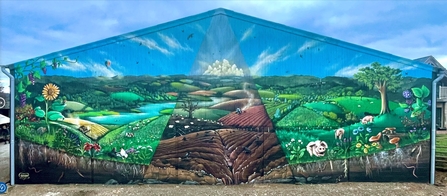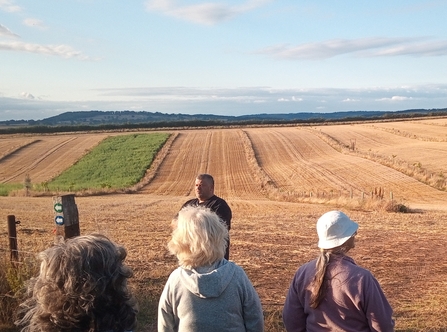On a sunny summer’s evening in early August, the Ross-on-Wye branch of Herefordshire Wildlife Trust met at Ben Taylor-Davies’s farm to see how farming and nature can thrive hand-in-hand.
'RegenBen', as Ben is known, is a bundle of energy and an evangelist for nature friendly farming. The family farm, Townsend Farm in Brampton Abbotts, works to “produce nutrient-dense, high welfare food whilst enhancing the environment”. The new kid on the block in farming circles these days is “Regenerative Farming”, an approach that makes all this possible. Hence the name RegenBen!
Standing in front of a stunning mural called “New Horizons” that’s painted on the side of a barn, Ben explains the five principles by which he farms, each depicted in technicolour behind him. In a nutshell these are:
- Keep soil covered at all times helping to regulate moisture and temperature
- Maintain root structure. Incredibly, roots put sugar-rich carbon into soils feeding the microorganisms that keep soil healthy
- Keep soil disturbance to an absolute minimum – reduce ploughing with no agrochemicals
- Ensure diversity of plants and species wherever possible, avoid mono-cropping to reduce pests, weeds and diseases.
- Integrate livestock and their manures for natural fertilising.



